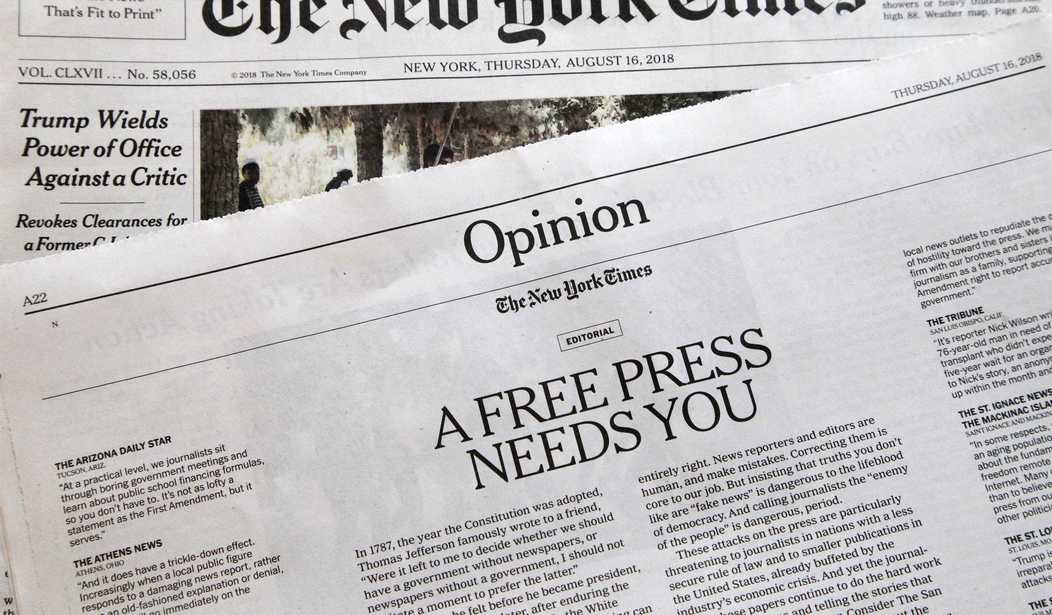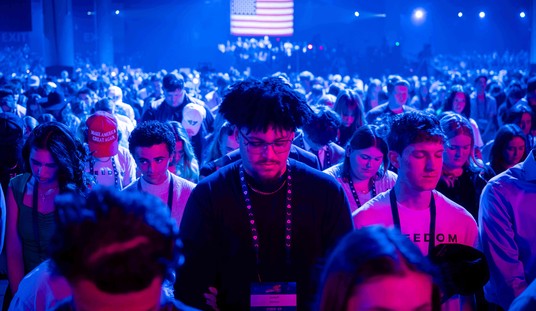This long-simmering defamation case has some in the media sounding dismissive, but their actions say the opposite.
A long-simmering court battle with the media has been revived, and some in the press are responding in a curious fashion. Previously, a district court dismissed a suit brought by Sarah Palin against the newspaper The New York Times. Palin filed the suit in response to an editorial that alluded to a Palin website being responsible in some fashion for a politically-motivated shooting, leading to her claim of defamation.
The editorial, written in response to the congressional baseball game shooting in 2017, mentioned that the Gabby Giffords shooting in 2011 could have been inspired by a Palin website that pictured potentially vulnerable voting districts with crosshairs on a map. There is nothing to point to that indicates Jared Loughner, Giffords’ shooter, was so inspired and the claim that the site had images of the politicians was not correct. There is not even evidence that Loughner had even seen the map in question. The Times issued a correction on the editorial.
A few of the reactions to this new announcement of the case moving to trial have been interesting. At the Washington Post, Erik Wemple says,
At issue is the elasticity of the protections that allow news organizations to present tough coverage of public figures. Or, to put things a bit more sharply, the case will help demarcate the line between really bad journalism and libelous journalism.
It points to the interesting aspect of the “malice” aspect of these defamation cases; whether there can ever be accountability for reckless or negligent reporting.
This can certainly be the issue in this particular case. In the editorial, not only did they inaccurately accuse the Palin site of placing crosshairs over the faces of select politicians, but it also linked to an ABC News story that stated clearly there was nothing to prove the Giffords gunman had ever seen Palin’s web page. Also at issue was the fact that the linkage of Palin to the Giffords shooting had been disputed years earlier; the New York Times had previously reported this was not the case.
So, while intentional malice may be tough to prove, a journalism equivalent of malpractice could certainly be shown, and this alone could lead to a curious judgment. It may be for this reason that there are signs of nervousness in the media landscape. Oliver Darcy reached out to CNN’s counsel on such matters. First Amendment attorney Ted Boutrous told him:
“This lawsuit has always seemed to me to be part of a disturbing trend in recent years of high-profile political figures misusing libel suits as political stunts intended to chill speech on matters of public concern — exactly what the First Amendment forbids.”
Considering the many ways the Times exhibited reckless commentary and disturbingly lax research on the matter, calling the suit a political stunt seems hyperbolic. Then another CNN legal mastermind, Jeffrey Toobin, weighed in on the announced courtroom drama. (A moment here is allowed for chuckling.) Toobin saw a need to deflect, attempting to turn this case into an indictment on conservatives and, of course, Fox News.
“Palin is the perfect plaintiff and The New York Times is the perfect defendant for the right to mobilize against First Amendment protections for the press. Fox needs those protections more than The New York Times at the moment. The New York Times made a single mistake and behaved responsibly. Fox was the gateway for a torrent of lies.”
As for their involvement, the Times is laying claim to acting appropriately, and that their actions with correcting the piece are enough to exonerate them. Speaking to Darcy a Times spokesperson focused on the threatening actions of Palin.
“We published an editorial about an important topic that contained an inaccuracy. We set the record straight with a correction. We are deeply committed to fairness and accuracy in our journalism, and when we fall short, we correct our errors publicly, as we did in this case.“
Hurting their case in this regard is the recent history of corrections in the New York Times which were not exactly public. The paper has been caught altering the assessment on the Hunter Biden laptop story and with its report on the Joe Biden sexual assault claim. There was another piece on Donald Trump and the NRA that was stealth-edited. They cleaned up a Paul Krugman column rife with errors, and slyly removed an anti-Semitic reference in an article about Alexandria Ocasio-Cortez.
Then there was the highly-touted influential work “The 1619 Project,” which fell under strong criticism. That disputed work brought out numerous historians who declared there were numerous errors in its content, leading to more alterations taking place on the down-low.
These examples, and more, have taken place in the wake of that Palin editorial. For the paper to declare they have been open and public with their corrections is amusing, and maybe a touch desperate. Many in the press circles seem to share this feeling, based on their reactions.














Join the conversation as a VIP Member